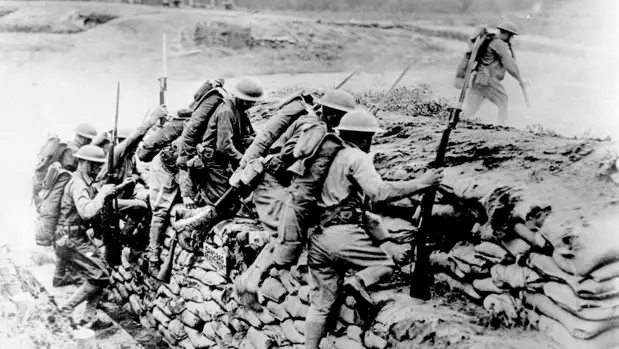
World War 1 (1914-1918)
World War I started in 1914, marking the beginning of a global conflict that involved many of the world’s great powers.
The war officially began on July 28, 1914, when Austria-Hungary declared war on Serbia.
This assassination set off a chain reaction among alliances and countries, pulling nations into a war that would last until 1918.
You’re not alone if you have ever wondered how a single event led to a war of such magnitude. This blog post aims to unravel the complexities surrounding the start of World War I and help you understand how political alliances and national tensions contributed to the outbreak of this massive conflict.
The assassination of Archduke Franz Ferdinand was a key moment, setting off a series of declarations that expanded into a worldwide battle. This conflict saw countries like Germany, Austria-Hungary, France, and the United Kingdom face off.
The details of each nation’s participation in the war reveal fascinating insights into the political climate of the early 20th century.
Understanding the Timeline of World War I
World War I was a global conflict that reshaped many countries. It involved multiple key events and dates that marked significant moments in history. These elements help paint a clear picture of how the war unfolded and its impact.
When Did World War One Start?
World War I, also known as the Great War, began on July 28, 1914. The immediate trigger was the assassination of Archduke Franz Ferdinand of Austria, but deeper issues like nationalism and alliances played a role. When Austria-Hungary declared war on Serbia, it set off a chain reaction.
Countries across Europe quickly took sides, leading to a large-scale war until 1918.
Key Dates and Events in World War I
Table 1 outlines several key events that defined World War I.
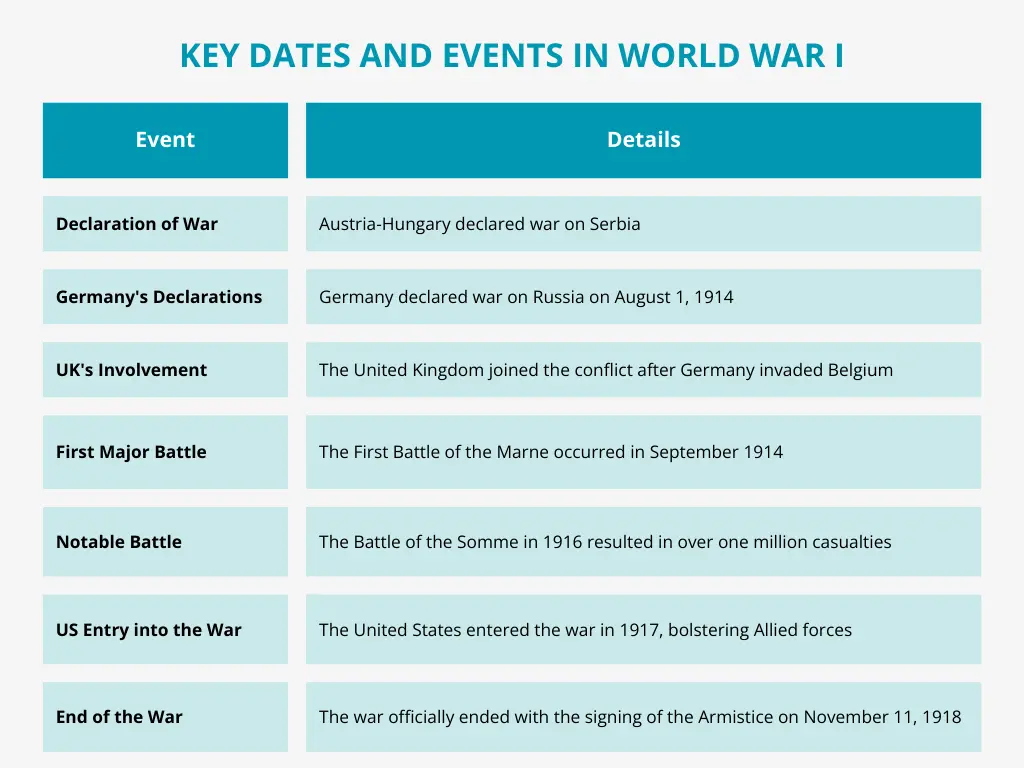
World War I Dates: A Comprehensive Overview
World War I lasted four years, from 1914 to 1918, and was marked by some of the bloodiest battles in history. The end of the war, on November 11, 1918, marked the beginning of a worldwide push for peace and diplomacy.
Many countries involved in World War I were also part of World War II, as unresolved issues and new challenges arose.
The First World War changed political landscapes and societies. Its aftermath paved the way for significant changes in national borders and the creation of new nations. This war’s timeline offers insight into the complexities and impact of global conflict.
The Causes of World War I
A complex web of alliances, national tensions, and significant events marked World War I. These causes intertwined to create the backdrop for a devastating conflict that reshaped the world.
Why Did World War 1 Start?
The beginning of World War I, or the Great War, on July 28, 1914, can be traced back to a mix of political, military, and social tensions. Nationalism played a key role as countries sought to assert their superiority and independence.
This was particularly true in Europe, where the balance of power was fragile.
Economic rivalries and competition for colonies added fuel to the fire. Industrialized nations were eager to expand their empires and influence, creating friction.
The opposing ambitions of these nations set the stage for conflict.
The Role of Alliances and Tensions
Alliances played a significant part in escalating regional disputes into a full-scale war.
- The Central Powers: Germany, Austria-Hungary, and Italy,
- The Allies: Britain, France, and Russia.
These alliances were meant to deter aggression, but instead, they created a situation in which a conflict involving one country could quickly draw in its allies. This interconnectedness made localized conflicts more dangerous.
Tensions in the Balkans, known as the “Powder Keg of Europe,” were particularly explosive. Austria-Hungary and Russia’s desire for greater regional influence heightened the risk of confrontation. This rivalry contributed significantly to the onset of hostilities.
The Impact of the Assassination of Archduke Ferdinand
The assassination of Archduke Franz Ferdinand of Austria-Hungary on June 28, 1914, is often seen as the immediate catalyst for World War I. Gavrilo Princip, a Bosnian Serb nationalist, assassinated with the hope of promoting Slavic independence.
Austria-Hungary’s response was swift and aggressive. They issued an ultimatum to Serbia, and when Serbia’s response was seen as unsatisfactory, Austria-Hungary declared war, prompting Russia to mobilize in support of Serbia.
This assassination triggered a series of events that led the major powers into a spiraling conflict. The alliances and ambitions of these powers quickly fueled the flames of war, kicking off a global conflict that lasted for over four years.
Major Players in World War I
World War I was a significant global conflict involving many countries and alliances. Key players emerged from two main sides: the Central Powers and the Allies, each led by influential figures and nations.
Who Were the Key Countries Involved?
Several countries played critical roles during World War I. The Central Powers, led primarily by Germany, Austria-Hungary, and the Ottoman Empire, formed a formidable coalition against their adversaries.
On the opposing side, the Allies included major players like the United Kingdom, France, Russia, and the United States.
Other nations, like Italy and Japan, joined the Allies, contributing military and economic resources. Their involvement transformed regional conflicts into a full-scale global war.
The tensions from these alliances and rivalries eventually set the stage for another major conflict, World War II, in subsequent years.
World War I: The Central Powers vs. the Allies
The Central Powers and the Allies were the two main alliances during World War I.
The Central Powers comprised Germany, Austria-Hungary, and the Ottoman Empire. Mutual defense agreements and shared interests bound these nations.
In contrast, the Allies, initially formed by the Triple Entente, consisted of France, Russia, and the United Kingdom. Over time, this alliance expanded to include Italy, Japan, and the United States.
The combination of resources, manpower, and tactics eventually led to the Allies overcoming their opponents, solidifying their dominance by the end of World War I.
Who Was President During World War I?
Woodrow Wilson served as President of the United States during World War I. Elected in 1912, his administration maintained a neutral stance as the war erupted in Europe.
However, the sinking of the Lusitania and other factors prompted him to enter the war in 1917, leading the United States to join the Allies.
Wilson’s leadership was crucial in shaping the post-war landscape. He outlined his vision for peace in his famous Fourteen Points, which emphasized self-determination and the formation of a League of Nations.
His efforts aimed to prevent future conflicts, though his vision was not fully realized until after World War II. His presidency left a lasting impact on international relations and the role of the United States in global affairs.
The Course of the War
World War I involved massive shifts in warfare tactics and battles on multiple fronts, setting the stage for World War II. Technological advances changed how the war was fought and impacted the countries involved.
WWI Warfare: Tactics and Technology
World War I showcased new military tactics and technologies that transformed combat. Trench warfare became a defining feature, with long, narrow trenches for soldiers to protect themselves from enemy fire. This static form of combat resulted in high casualties.
Machine guns, artillery, and gas attacks were standard, leading to devastating battlefield conditions. Tanks were introduced later in the war, providing a way to overcome trench defenses.
The war also saw the significant use of airplanes for reconnaissance and combat, marking the beginning of aerial warfare.
Naval warfare also played a critical role: submarines, particularly German U-boats, disrupted supply lines, impacting the war’s course.
Communication technology improved, with radio and telegraphs enhancing coordination among troops.
These innovations in tactics and technology played a central role in shaping the outcomes of the First World War.
World War I: The Great War on Multiple Fronts
World War I was fought mainly across Europe but also in other regions. The Western Front in France and Belgium saw some of the war’s heaviest fighting, with trench lines stretching for miles.
Battles such as the Somme and Verdun became synonymous with the brutal stalemate experienced by forces on both sides.
On the Eastern Front, the conflict between Germany and Russia was marked by fluid movement and significant territorial changes. The war extended to the Middle East, where the Ottoman Empire faced British-led forces.
The Italian Front and the Balkan Front further complicated the military landscape.
The global nature of the conflict meant that many nations outside of Europe, such as the United States, eventually joined the war, shifting the balance of power.
This involvement led to diverse strategies and battlegrounds across continents, making World War I a world war affecting numerous countries.
World War II: How It Followed World War I
World War I laid the foundation for World War II, often considered a continuation of unresolved issues from the earlier conflict.
The harsh terms of the Treaty of Versailles, which ended the First World War, imposed heavy reparations and territorial losses on Germany. This generated significant resentment and economic hardship, contributing to the rise of Adolf Hitler and the Nazi Party.
The geopolitical landscape drastically changed with the dissolution of empires like Austria-Hungary and the Ottoman Empire. The League of Nations was formed to prevent future wars but failed in this mission, lacking enforcement power.
These post-war conditions and new political ideologies played a direct role in the onset of World War II. The end of the First World War did not bring lasting peace but set the stage for another devastating conflict 20 years later.
The Outcome of World War I
World War I significantly impacted global politics, economies, and societies. These changes influenced future conflicts, including World War II, and shaped the modern world.
Who Won World War 1?
The Allied Powers, which included France, the United Kingdom, and the United States, emerged victorious from World War I.
They fought against the Central Powers, which included Germany, Austria-Hungary, and the Ottoman Empire. The armistice signed on November 11, 1918, marked the formal end of the conflict.
The Allies faced extensive economic and social challenges despite their victory due to war-related devastation.
The victory was not only military but also diplomatic. The Allies secured agreements and treaties that would dictate post-war terms.
While the Central Powers were defeated, the conflict left much of Europe in ruins, leading to territorial boundaries and political structure shifts.
The Treaty of Versailles and Its Consequences
The Treaty of Versailles, signed in 1919, was a key outcome following WWI. It imposed harsh penalties and reparations on Germany, including large territorial losses, military restrictions, and substantial financial reparations.
The treaty aimed to prevent German aggression, but the strict conditions created economic hardship and resentment within Germany.
This discontent later fueled the rise of Adolf Hitler and the Nazi Party, contributing to the outbreak of World War II.
Many historians argue that the treaty’s punitive measures set the stage for future conflict. Although it intended to maintain peace, the treaty’s ramifications were long-lasting and complex, influencing the political landscape for decades.
World War I Summary: Lessons Learned
WWI, often called the “Great War,” taught valuable lessons about warfare and diplomacy. It highlighted the devastating potential of modern weapons such as tanks and airplanes.
Strategies evolved to incorporate new technologies like machine guns and chemical weapons, changing how wars were fought.
Politically, the war encouraged the formation of international bodies designed to foster peace, such as the League of Nations. However, the league struggled with effectiveness, leading to changes in the establishment of the United Nations after World War II.
The conflict emphasized the need for diplomacy and cooperation to avoid such widespread destruction in the future. Understanding the consequences of the First World War remains crucial for preventing similar global conflicts.
The Legacy of World War I
World War I left a lasting impact on the world. It transformed military strategies and technologies and set the stage for future conflicts. The aftermath of the war is still commemorated worldwide through various memorials.
How World War I Shaped Modern Warfare
World War I introduced several innovations in warfare, marking a significant shift in military tactics and technologies. Trench warfare became a defining feature, with soldiers enduring harsh conditions on the front lines.
Tanks and airplanes were used for the first time, changing ground and aerial combat dynamics. This war also saw the introduction of chemical weapons, which had devastating effects on soldiers and prompted later bans.
Communication technology advanced, too, with wireless equipment and improved intelligence methods. These developments during World War I laid the groundwork for military tactics in future conflicts, including in World War II.
The Influence of World War I on World War II
The outcome of World War I directly influenced the events leading to World War II. The Treaty of Versailles, which ended the first war, imposed harsh penalties on Germany, including significant territorial losses and reparations.
These conditions fueled economic hardship and political instability in Germany, creating fertile ground for the rise of Adolf Hitler and the Nazi Party. The grievances over the treaty’s terms were a driving force behind Germany’s militarization and expansionist policies.
Moreover, the geopolitical landscape was altered, creating new state borders and European tensions. This redrawing of maps and unresolved conflicts from World War I was key in generating the circumstances that caused World War II.
Remembering the First World War: Commemorations and Memorials
In the years following World War I, many countries built monuments and memorials honoring those who served and lost their lives. The annual observance of Armistice Day on November 11, marking the end of World War I, is a primary example of these commemorations.
Countries like the United Kingdom and France host solemn ceremonies to remember the sacrifices made by their soldiers.
Museums and memorials worldwide preserve artifacts and stories from the war. These sites ensure that the lessons and legacy of World War I remain a part of public consciousness, reminding current and future generations of the war’s enduring impact.
Closing Remarks
World War I marked a pivotal moment in global history. The conflict lasted from 1914 to 1918 and involved major world powers divided into the Allies and the Central Powers. The assassination of Archduke Franz Ferdinand in 1914 triggered a chain of events that led to the war’s outbreak.
The war’s impact was profound, leading to significant political shifts and laying the groundwork for future conflicts.
Key battles, such as the Battle of the Somme and Verdun, highlighted the brutal nature of trench warfare. The aftermath reshaped national borders and introduced technological advances in warfare.
Key Takeaways:
- World War I began in July 1914.
- It involved extensive alliances and modern warfare techniques.
- The war concluded in November 1918, impacting future international relations.
As the world looked to recover and rebuild, many lessons were learned that influenced the geopolitical landscape in the following years.
Frequently Asked Questions
World War I was a complex conflict triggered by various factors. Primary causes include political alliances, territorial disputes, and the assassination of Archduke Franz Ferdinand. The war ended with significant consequences for the countries involved.
What caused World War 1 using main?
World War I began due to political, military, and nationalistic tensions. The assassination of Archduke Franz Ferdinand was a significant catalyst, alongside longstanding rivalries between major European powers. Complex alliances and treaties also played a critical role.
Why did Germany start WWII?
Germany’s involvement in World War II was primarily driven by Adolf Hitler’s aggressive expansionist policies and the desire to overturn the Treaty of Versailles. Hitler sought to establish German dominance in Europe, leading to the invasion of Poland in 1939, which triggered World War II.
Why was Germany blamed for WW1?
Germany was mainly held responsible for World War I primarily because it supported Austria-Hungary after the assassination of Archduke Franz Ferdinand. The Treaty of Versailles, imposed on Germany after the war, stipulated harsh reparations and accountability due to their role in escalating the conflict.
What turned World War 1?
The United States’ entry into the war in 1917 marked a turning point. The additional resources and manpower provided by the U.S. bolstered the Allies, leading to their eventual victory. Technological advancements and strategic innovations also shifted the tide in favor of the Allies.
Who was assassinated to start WW1?
The assassination of Archduke Franz Ferdinand of Austria-Hungary on June 28, 1914, served as the immediate trigger for World War I. He was killed by Gavrilo Princip, a Bosnian Serb nationalist, setting off a chain of events that led to the Great War.
How was WW1 won?
The Allied Powers won World War I after several key victories and the successful blockade of the Central Powers’ resources. The armistice signed on November 11, 1918, marked the end of hostilities, as the Allies managed to push the Central Powers back after years of stalemate.
Which country suffered the most casualties during WWI?
Russia suffered the most military and civilian casualties during World War I, with millions of soldiers and civilians dead or wounded. The country’s heavy losses resulted from several major battles on the Eastern Front and internal strife that led to the Russian Revolution.
What country started WW1?
The conflict started when Austria-Hungary declared war on Serbia in response to the assassination of Archduke Franz Ferdinand. Austria-Hungary’s actions, backed by Germany, led to a larger war involving multiple European powers due to pre-existing alliances.
Would World War I have happened without the assassination?
While the assassination of Archduke Franz Ferdinand was the immediate trigger, tensions in Europe were already high. The intricate web of alliances and rivalries might have eventually led to war even without the assassination, but it was a decisive event that escalated those tensions.
Why did the US get involved in WW1?
The United States joined World War I due to several factors. These included Germany’s unrestricted submarine warfare, which threatened American ships. The discovery of the Zimmermann Telegram was also a factor. Germany tried to ally with Mexico against the United States in this telegram. American entry in 1917 significantly bolstered the Allied effort.
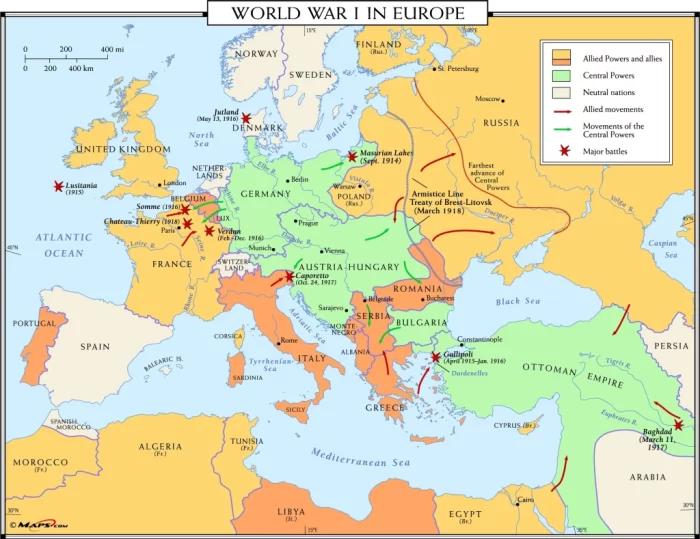
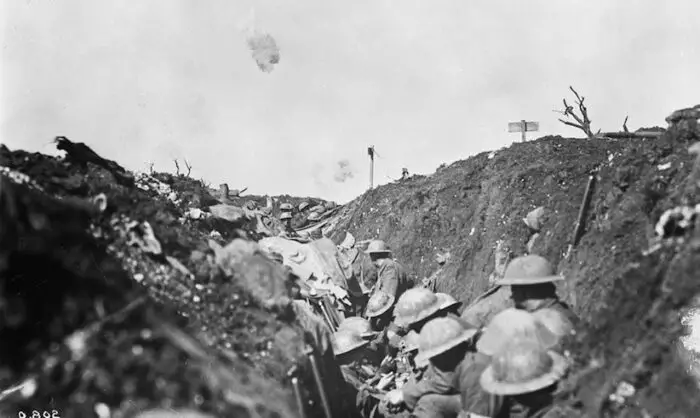
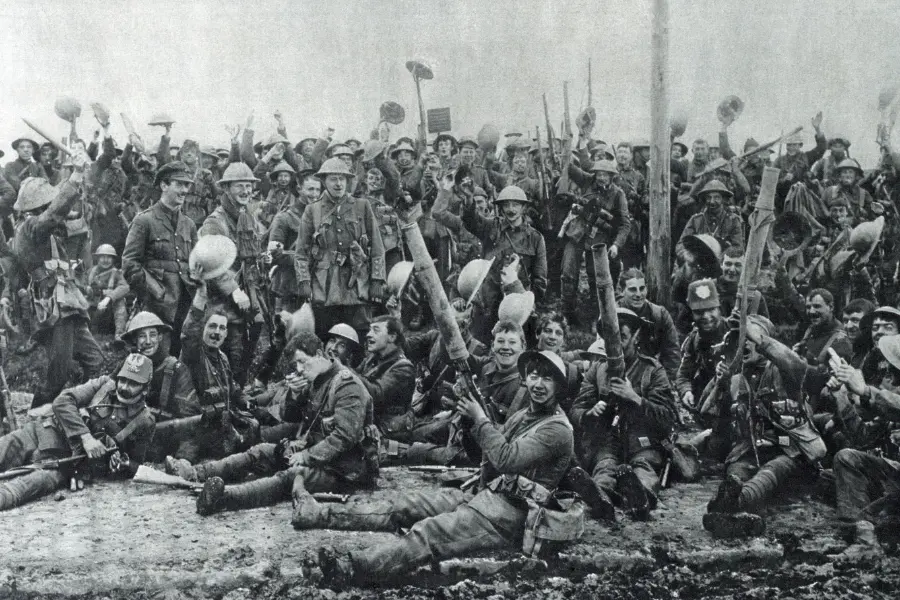
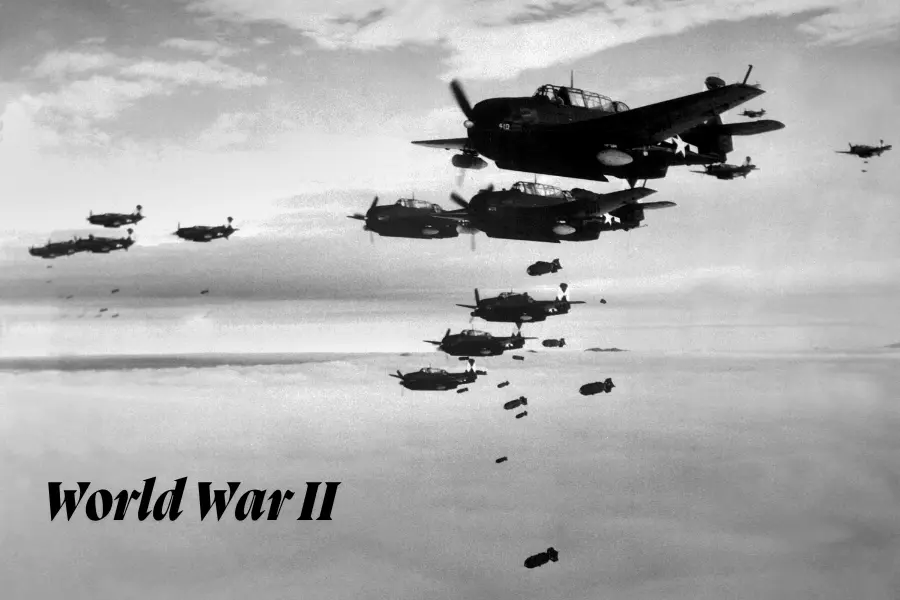
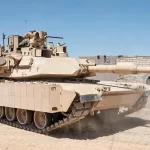
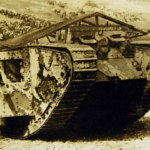


 Leonardo Bianchi,
the creator of Leonardo da Vinci's Inventions.
Thank you for visiting
Leonardo Bianchi,
the creator of Leonardo da Vinci's Inventions.
Thank you for visiting